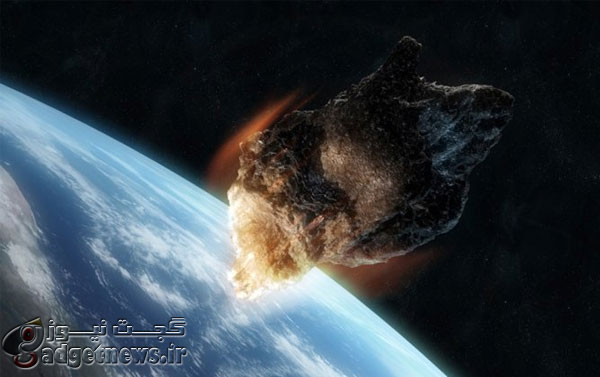
اور عمومی بر آن است که احتمال برخورد شهابسنگها و خردهسیارکها به زمین بسیار کم است و برخوردهای بزرگ با فاصلههای چند میلیون سال اتفاق میافتند. باوری که یافتههای جدید دانشمندان نادرستی آن را نشان میدهد.
شبکهای جهانی از آشکارسازهای صوتی که با هدف ثبت انفجارهای اتمی داخل جوّ زمین فعالیت میکند، در فاصله سالهای ۲۰۰۰ تا ۲۰۱۳ توانسته ۲۶ انفجار بزرگ را داخل جوّ زمین ثبت کند که هیچ یک منشاء هستهای ندارند، بلکه ناشی از انفجار خردهسیارکها در جوّزمین بودهاند.
البته تنها یکی از این ۲۶ انفجار، در چلیابینسک روسیه باعث خسارت و صدمه دیدن تعداد زیادی شد و توجه افکار عمومی را به خود جلب کرد. این برخورد ۶۰۰ کیلوتن انرژی آزاد کرد و زندگی ۱۰۰۰ نفر را تحت تاثیر قرار داد (بمب اتمی اول در هیروشیما تنها ۱۵ کیلوتن انرژی آزاد کرده بود). به گفته فضانورد سابق ناسا و مدیر موسسهی B-612، اِد لوو، بیشتر این انفجارها ناشی از سیارکهای کوچک و در ارتفاعات بالای اتمسفر بوده است، اما با توجه به فراوانی آن، احتمال برخوردهای بزرگی که توانایی تخریب یک شهر را داشته باشد به یک برخورد در هر قرن افزایش مییابد.
موسسهی B-612 (که نام خود را از سیارهی اسرارآمیز شازدهکوچولو در کتاب آنتوان دوسنت اگزوپری گرفته است) قصد دارد در سال ۲۰۱۸ تلسکوپی را برای پایش و شکار سیارکهای خطرناک به مدار زمین ارسال کند. تلسکوپ این موسسه با نام «دیدهبان» در ۵/۵ سال اول فعالیت خود، قادر خواهد بود که ۹۰ درصد از سیارکهای نزدیک به زمین با قطر بالای ۱۴۰ متر و ۵۰ درصد از سیارکهای با قطر ۴۰ متر را شناسایی کند. گفتنی است که سیارکی با قطر ۵۰ متر میتواند یک شهر را نابود کند (تصور کنید برخورد یک آپارتمان بزرگ با ۵۰ برابر سرعت صوت چه انرژی بزرگی آزاد خواهد کرد). اِد لوو با بیان اینکه شهابسنگ چلیابینسک حدود ۲۰ متر بوده است، اندازهی شهابسنگهای خطرناک برای شهرها را رو به کاهش میداند. به گفتهی او مهم نیست که بسامد این گونه برخوردها یک قرن، ۸۰ سال یا ۱۵۰ سال باشد. مهم آن است که همگان بپذیرند که این یک اتفاق نادر در چند میلیون سال نخواهد بود.
شاید شما هم مثل من تا امروز فکر میکردید احتمال صدمه دیدن با یک شهابسنگ، کمتر از احتمال تصادف با اتوبوس جهانگردی کارتون مورچهخوار باشد. ولی گویا خطر خیلی بیشتر از اینها است و بهتر است بیشتر مراقب بالای سر خود باشیم.
Asteroids Whack Earth More Often Than Thought
A network detected 26 explosions between 2000 and 2013 caused by asteroids blasting apart in Earth's atmosphere.
A global network that listens for telltale traces of nuclear weapons tests detected 26 explosions between 2000 and 2013 caused not by nuclear explosions but by asteroids blasting apart in the atmosphere, a video visualization released on Tuesday shows.
Only one impact, the 2013 strike over Chelyabinsk, Russia, caused widespread injuries and damages on the ground, but the study is a somber reminder that Earth's lucky days may be numbered.
"Most of the impacts are too small and too high up to cause major damage … but it does show you … an asteroid large enough to destroy a city is likely to occur about once every century or so," Ed Lu, a former NASA astronaut who now oversees the asteroid-hunting B612 Foundation, told reporters on a conference call.
Photos: Russian Meteor Strike Aftermath
Play Video
Russian Meteor: The Full Story
We now know the size of the massive space rock…and just wait till you hear how fast it was moving!
Nikulin Vyacheslav/ITAR-TASS Photo/Corbis
"There is a popular misconception that asteroid impacts are extraordinarily rare — millions of years between large asteroid impacts — and that's incorrect. We think that actually seeing these things on a map, on a globe of the Earth with the date will help them understand that," Lu said.
The data used in the video was collected by a global network of infrasound stations, consisting of microbarometers that continuously measure miniscule changes in air pressure at frequencies much lower than the range of human hearing. The network is operated by the Nuclear Test Ban Treaty Organization.
The B612 Foundation — named after a fictional planet in the book The Little Prince by French author and pilot Antoine de Saint-Exupery — plans to launch a telescope in 2018 to scope out potentially dangerous asteroids, such as the one that exploded over Chelyabinsk with the force of 600 kilotons of energy. More than 1,000 people were injured by flying glass and debris.
In comparison, the atomic bomb dropped on Hiroshima in 1945 had an energy impact of 15 kilotons.
During its initial 5.5 years of operation, B612's telescope, called Sentinel, should be able to find 90 percent of near-Earth asteroids 460 feet (140 meters) in diameter or larger, and about 50 percent of asteroids 130 feet (40 meters) in diameter.
Russian Meteor: Small Asteroid Impacts More Likely
Asteroids between 40 and 45 meters in diameter are the ones that have the potential to destroy a city.
"Picture a large apartment building — moving at Mach 50," Lu told Discovery News.
"Chelyabinsk taught us that asteroids of even 20-meter size can have substantial effect. The size range of what you would call a 'city-killer' is beginning to decrease," Lu said.
"The data we have is just on the edge of what's just large enough to destroy a city, but this is not the main point … Whether or not these things happen once a century, once every 80 years or once every 150 years, we're going to find out once we launch Sentinel.
"What's important is that people need to understand that it's not once in million years, it's not once every 50 million years. It's not super-duper rare," Lu said.
 گجت نیوز آخرین اخبار تکنولوژی، علم و خودرو
گجت نیوز آخرین اخبار تکنولوژی، علم و خودرو 





